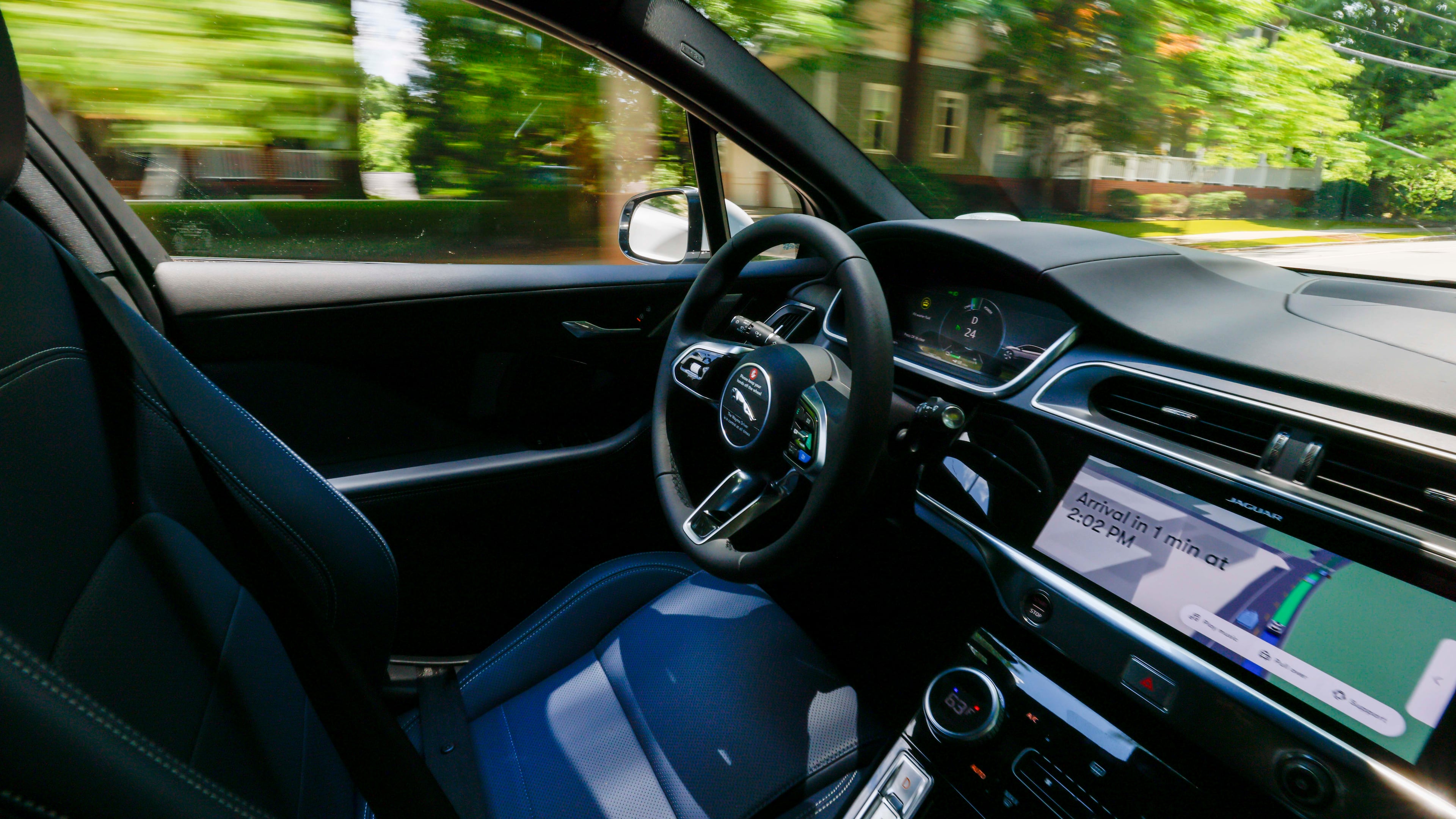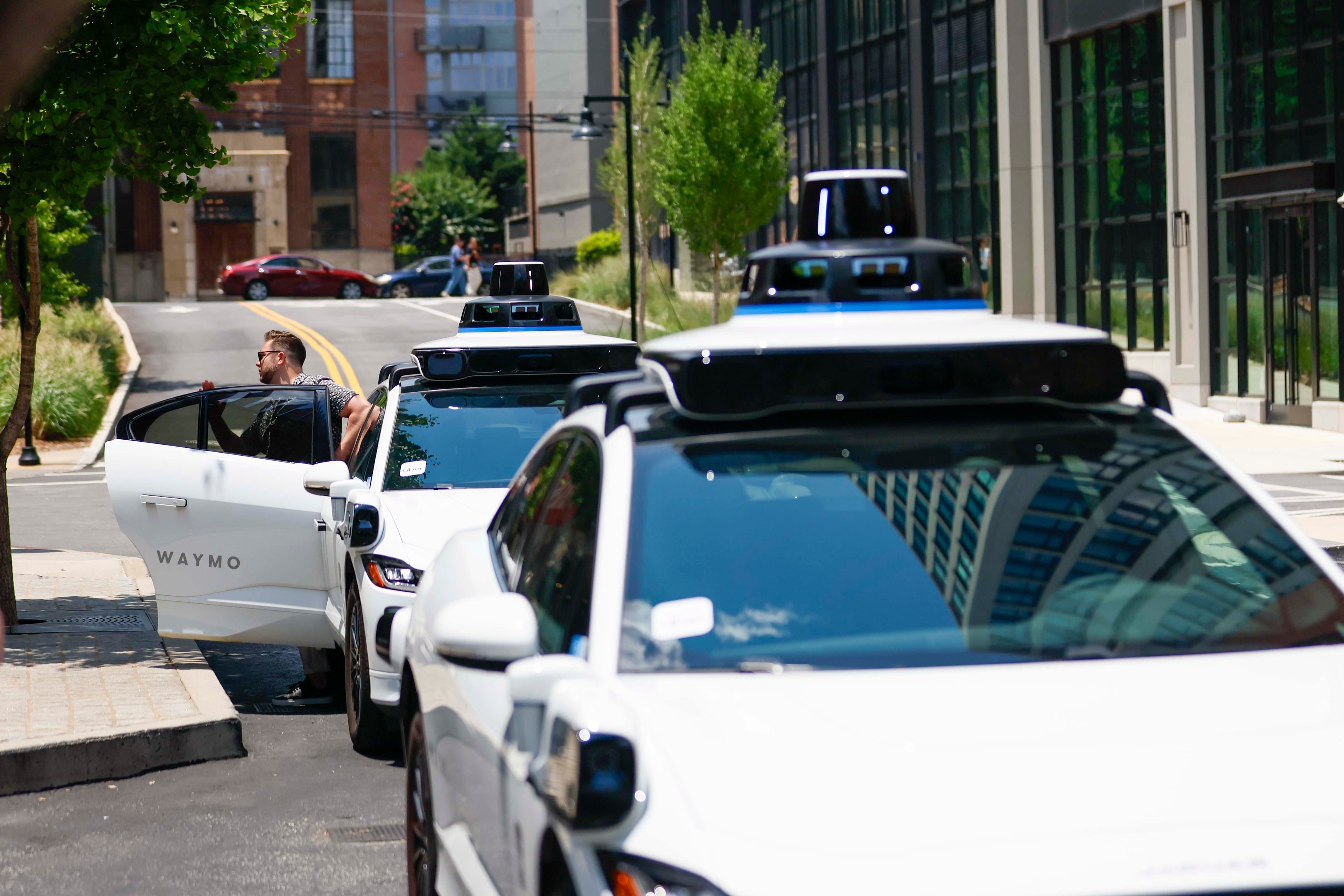Waymo has come to Atlanta. Here’s what it’s like to ride in a driverless car.

Science fiction meets real life: Driverless cars have come to Atlanta. Now, you can ride in one.
As of Tuesday, June 24, Waymo electric autonomous vehicles are now available to the Atlanta public exclusively through the Uber app.
While some Waymo vehicles have already been available for early access rides since mid-May, this marks the official launch of the program.
The new partnership includes a few dozen vehicles and covers 65 square miles of Atlanta, from the Capitol View neighborhood to downtown to Buckhead. Eventually, Uber and Waymo plan to expand the coverage area and the number of vehicles serving it.
“We start in a useful but focused service territory, and then continue to expand that footprint over time, both focused on safety, but also on how our riders are using the service,” said Waymo spokesman Ethan Teicher.
Step by step
Catching a ride in an autonomous vehicle, or AV, starts like any other Uber ride: in the app, telling it where you want to go. Order an UberX, Uber Comfort or Uber Comfort Electric and you may be matched with a Waymo vehicle – at no additional cost.
Riders will be alerted each time a Waymo vehicle is being sent, with the option to accept it or switch to a non-AV.
While you cannot specifically request a Waymo, you can boost your chances of getting an AV by opting in via the Ride Preferences section of the Uber app settings.

When a Waymo pulls up, you’ll be able to tell if it’s yours by the initials showing on the dome on top of the car. Once the vehicle arrives, you’ll use the Uber app to unlock the car and start your trip.
A screen inside the car shows a map with your route and ETA. An automated voice will let you know when you’re about to arrive and remind you to grab your belongings before exiting.
During the ride, you can focus on other things, like talking to your fellow riders, making a phone call, etc. The Waymo AV will get you to your destination, following the speed limit and other traffic laws — including yielding for pedestrians.
If you face any issues, 24/7 human support is available through the Uber app and through the Waymo vehicle itself.
What’s new and what’s not
Like any other Uber trip, you’ll be able to rate your rides in Waymo vehicles. However, you won’t be prompted to tip.
Pricing will still be up-front, and rates will match UberX, Uber Comfort or Uber Comfort Electric, according to Uber.
Typical, human-driven Uber rides will still be available within the Waymo coverage zone.
While Waymo doesn’t have anyone in the driver’s seat, that doesn’t mean you get to sit there. Riders can, however, sit in the passenger seat or the backseat.

Not the first time
While Waymo does have its own app — Waymo One — that’s not how you book rides in Atlanta. Previously, Uber and Waymo did a similar launch in Austin and are planning another in Miami. Currently, Waymo is also available in Phoenix, San Francisco and Los Angeles.
So far, Austin’s Waymo fleet has 100 vehicles. Within the next few years, hundreds of AVs are expected across Austin and Atlanta.
Since the launch, the percentage of zero-emission electric Uber trips in Austin has risen more than 50%. On average, Waymo trips in Austin are earning an average 4.9 stars out of 5, according to a news release about the Uber-Waymo partnership.
Is it safe?
Waymo, which says it has more than 10 years and 70 million miles of experience, says its goal is to make transportation “safer, more accessible, and more sustainable” and to do it “without the need for anyone in the driver’s seat.”
However, Waymo has still had issues, including reports of recalls and crashes — one of which resulted in a fatality in San Francisco, though Waymo was deemed not at fault, according to a news report — and an investigation by the National Highway Traffic Safety Administration.
And in Atlanta in May, a Waymo car bypassed the barricades of a car-free Streets Alive event.
As Teicher put it, “driving is dangerous.” Accidents can happen, even when the Waymo Driver autonomous driving technology is not at fault. But when things do happen, Teicher said Waymo is “fully committed to learning from it and continuing to earn that trust.”
On the safety section of its website, Waymo says its data shows traffic injuries and fatalities are down in places where Waymo operates. Compared to the average human driver going the same distance, Waymo Driver had 88% fewer serious injury crashes, 79% fewer air bag deployments and 78% fewer injury-causing crashes, according to Waymo. The decreases are even bigger for crashes involving pedestrians, bikes and motorcycles, the company says.
Each car — which can operate in rainy weather — has 29 cameras, 5 LIDAR sensors and 6 RADAR sensors. A big focus of safety is redundancy, according to Teicher; if sun glare is interfering with a camera, the LIDAR and RADAR are intended to make up for it.
Waymo Driver is also trained to recognize lights and sirens. If a Waymo does get pulled over, someone from rider support will call in to speak with the law enforcement officers making the stop.
And once you arrive at your destination and are about to get out, the car will alert you if there’s oncoming traffic.


